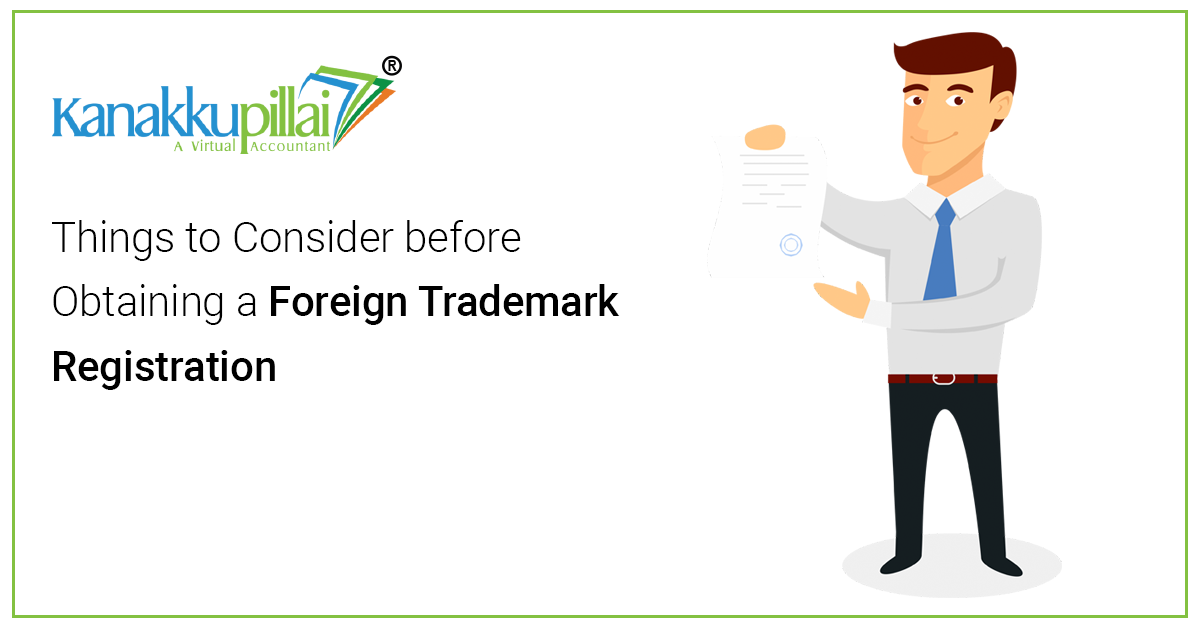Things to Consider before Obtaining a Foreign Trademark Registration
According to the World Intellectual Property Organization (WIPO), approx four million trademark applications on average are filed every year globally. In U.S., the trademark rights are formed through the use of a mark and it is developed by obtaining a Federal Registration i.e. with the United States Patent and Trademark Office (USPTO).
Majority of the U.S. brand owners are not aware that their precious trademark rights discontinue at the U.S. border. Hence, for the purpose of getting protection outside U.S., the trademark rights are required to be obtained independently across the territories.
- Register the trademark in the U.S. first
- Do your due diligence
- Utilize the Madrid System
- Hire an attorney
- Consider foreign translations
- Don’t delay
The (TM) symbol actually has no legal meaning. You can use the symbol on any mark that your company uses without registering it. The most common use of the TM symbol is on a new phrase, logo, word, or design that a company plans to register through the USPTO.
Moreover, the eligibility for foreign trademark registrations and the criterion for infringement of trademark differ in different country. Consequently, companies that have probability for growing outside the U.S. need to actively plan and obtain protection for trademark in foreign territories that is relevant for their particular industries.
1. Register the Trademark in the U.S
Before applying for foreign trademark registrations, the applicant must first register his trademark in the U.S. and this can be done through the U.S. Patent and Trademark Office (USPTO).
The foreign trademark registrations application can be completed directly from the USPTO website. The foreign trademark registration in the U.S. first shall give stronger grounds to register the trademark in other countries.
Related Topic
2. Work with Due Diligence
It is significant to be on familiar terms with how this method operates in one particular country in relation to the U.S. with the purpose of protecting the trademark in another country.
It is important to know and familiarize with the trademark rules and other guidelines of the countries where foreign trademark registration is applied for. Few of the great research resources shall include the WIPO and The International Trade Administration
3. Use the Madrid System
The Madrid System is the single stop way out for foreign trademark registrations and administering the trademark worldwide.
Under this Madrid Agreement, the applicants applying for foreign trademark registration can submit just one application to protect their work within a federation of countries. The Madrid Union is the combination of different countries that recognizes these international trademarks.
The filing of the MM2 form, which is available on the WIPO website, can be applied for international trademark protection. Then, a hard copy to the U.S. office can be submitted. Currently there are 113 countries offering protection under the Madrid Agreement, including France, Italy, Australia, the European Union and China
The applicant can choose particular countries or can also choose to protect his trademark in all the 113 countries. The applicant has to make the payment of the processing fee for foreign trademark registration with the WIPO, as it is less costly in comparison to the filing of an individual application in each country.
4. Hire an Attorney
In case the applicant is interested in foreign trademark registrations not covered under the Madrid Agreement as there are some countries not protected under the Madrid Agreement like Canada, Saudi Arabia and South Africa. In such countries, the applicant can consider seeking guidance from an attorney of that country in which he is planning to register trademark. According to the recommendation of USPTO an attorney can be searched through the International Trademark Association.
5. Consider Foreign Translations
It is very important for the applicants to carefully consider the foreign translations of the words while applying for foreign trademark registrations in other language. Thus, the applicant has to ensure and consider the foreign translation so as to avoid any kind of mistake of whatever slogan or term the applicant is using in that particular country.
6. Don’t Delay
The most advisable statement is that it is best not to delay in filing the foreign trademark registration applications, mainly if the intention is to do business overseas in the short term.
Related Topic
Requirements for Obtaining Foreign Trademark Registration
Two basic requirements must be met for a mark to be eligible for trademark protection: it must be in use in commerce and it must be distinctive. The first requirement, that a mark be used in commerce, arises because trademark law is constitutionally grounded in the congressional power to regulate interstate commerce.
You cannot register a trademark for free. However, you can establish something known as a “common law trademark” for free, simply by opening for business. The benefit of relying on common law trademark rights is that it’s free, and you don’t need to do any specific work filling out forms, etc.
The three main requirements for obtaining foreign trademark registration in India are:
- The applicant must be an India national or domiciled in India or must have genuine and valid commercial establishment or business in India.
- The applicant ought to have an Indian national trademark application or must have a registration of a trademark with Indian Trade Marks Registry. Hence, this national trademark application or registration shall be used as the basis while applying for international application. The international application will have the same trademark, list of goods and services as was mentioned in the national trademark application.
- In the international application, the applicant should choose one or more than one member countries from the Madrid Protocol, where the applicant wishes to give protection to his trademark.





